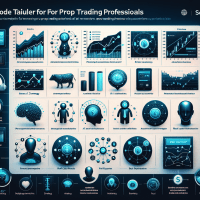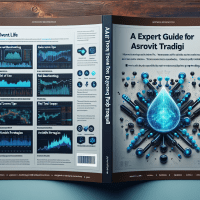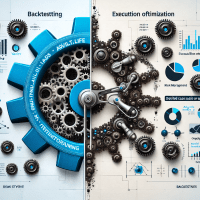Solvent.Life vs Vantir: AI Strategy vs Feedback Models in Prop Trading
Welcome to our in-depth analysis tailored for prop trading professionals, quants, and decision-makers. In today’s rapidly evolving markets, the use of AI-driven strategies is no longer optional but essential. This post explores and compares two leading solutions: Solvent.Life and Vantir. We will dissect their AI strategy and feedback models, provide advanced backtesting insights, and offer actionable tips for mitigating common pitfalls in prop trading.
Understanding the Role of AI in Prop Trading
The integration of AI in proprietary trading has transformed how strategies are built, tested, and optimized. With platforms like Solvent.Life and Vantir at the forefront, traders can leverage automated backtesting, real-time data feeds, and sophisticated risk management features. This revolution streamlines operations within prop trading firms while ensuring regulatory compliance with frameworks like MiFID II, ESMA, and NFA.
Figure 1: Dashboard view of a popular backtesting tool interface, exemplifying real-time analytics in prop trading.
Deep Dive: Solvent.Life vs Vantir
This section focuses on the nuanced differences between Solvent.Life and Vantir, diving into the core aspects of their AI-driven methodologies.
Solvent.Life: Pioneering AI Strategy
Solvent.Life focuses on leveraging AI strategies that are data-driven and tailored for dynamic market conditions. Key features include:
- Automated Strategy Development: Uses machine learning to optimize parameter sets automatically.
- Advanced Backtesting Modules: Integrates vectorized backtesting with adjustments for slippage, commissions, and real-time data feeds.
- Integration Capabilities: Seamless API access for broker integration (e.g., Interactive Brokers) making it ideal for prop firms.
- Compliance Tools: Regular updates to align with current regulations such as MiFID II and ESMA.
Vantir: Mastering AI Feedback Models
Vantir specializes in dynamic AI feedback models that provide traders with continuous performance insights. Its key functionalities include:
- Real-Time Feedback Mechanisms: Provides instant actionable intelligence to adjust strategies on the fly.
- Robust Backtesting Features: Combines event-driven and traditional backtesting approaches, ensuring data veracity across various asset classes.
- Data Quality and Historical Depth: Offers expansive historical datasets and seamless integration with platforms such as TradingView and NinjaTrader.
- Optimization and Scenario Analysis: Equipped with automated parameter optimization, stress testing, and detailed report generation.
Advanced Backtesting: Techniques and Best Practices
Backtesting remains a cornerstone in validating trading strategies, especially in a prop trading environment. However, modern backtesting requires more than running historical data; it demands a systematic approach to avoid pitfalls such as:
- Overfitting: Adjust your model regularly to avoid catering too much to historical noise.
- Survivorship and Look-Ahead Bias: Use clean, adjusted data; implement out-of-sample tests to validate results.
- Data Snooping: Incorporate robust cross-validation to prevent misleading backtest outcomes.
For advanced insights, consider integrating automated tools such as TradingView for technical indicators and charting, MetaTrader 5 for algorithmic trading, or QuantConnect for scalable backtesting frameworks. Below is a comparison table illustrating these tools:
| Tool | Backtesting Approach | Data Quality & Coverage | Integration Capabilities | Key Use Cases |
|---|---|---|---|---|
| TradingView | Vectorized; handles indicators well | Extensive historical data across equities, forex, crypto | API access, broker integration | Retail and prop trading for chart-driven strategies |
| MetaTrader 5 | Event-driven with automated walk-forward testing | High-quality forex and CFD data | Integrated broker environment | Algorithmic and expert advisor development |
| QuantConnect | Both event-driven and vectorized | Multi-asset classes, including equities, futures, forex | Seamless integration with external APIs and data sources | Quants and prop firms for scalable strategy testing |
Risk Management and Strategy Optimization
Risk management is indispensable. Prop firms demand that strategies undergo rigorous testing not only for profitability but also for defined risk parameters, such as:
- Sharpe Ratio Targets: Aim for a Sharpe ratio above 1.5 to ensure risk-adjusted returns.
- Maximum Drawdown Limits: Implement thresholds (e.g., less than 15%) and automate alerts on breaches.
- Profit Factor: Maintain a profit factor >1.5 as a minimum benchmark for sustainable strategies.
Furthermore, combining historical backtesting with walk-forward optimization helps identify adaptive strategies capable of responding to market shifts. With platforms like Vantir offering real-time feedback, traders can pivot dynamically, improving overall robustness.
Figure 2: An example backtesting report highlighting performance metrics, aiding strategic adjustments in live trading.
Case Studies: Real-World Applications in Prop Trading
Consider a leading prop firm that applied Solvent.Life’s AI strategy to optimize its equities trading approach. The firm faced several challenges:
- Strategy Overfitting: Initial tests yielded impressive returns but fell apart in live conditions.
- Data Quality Issues: Inconsistent data impacted risk metrics.
- Compliance and Reporting: Difficulty in generating reports compliant with current regulations.
By integrating comprehensive backtesting using MetaTrader 5 and real-time feedback from Vantir, the firm managed to:
- Reduce drawdown by 10% through timely strategy adjustments.
- Improve the Sharpe ratio from 1.2 to 1.6 after automated parameter optimization.
- Streamline reporting, ensuring compliance with MiFID II and other regulatory guidelines.
Integrating Automated Backtesting with Forward Testing
While historical backtesting provides a solid foundation, forward testing (paper trading) validates a strategy’s performance in near-real conditions. A practical integration involves:
- Running out-of-sample tests alongside backtesting to prevent look-ahead bias.
- Utilizing automated tools to continuously monitor key performance indicators during paper trading.
- Adopting robust frameworks like QuantConnect for seamless transition from historical data to live simulation.
Below is a simplified Python snippet using Backtrader to illustrate an automated testing approach:
import backtrader as bt
class TestStrategy(bt.Strategy):
def __init__(self):
self.sma = bt.indicators.SimpleMovingAverage(self.data.close, period=20)
def next(self):
if self.data.close[0] > self.sma[0]:
self.buy()
elif self.data.close[0] < self.sma[0]:
self.sell()
if __name__ == '__main__':
cerebro = bt.Cerebro()
data = bt.feeds.YahooFinanceData(dataname='AAPL', fromdate=bt.date2num(bt.datetime(2018, 1, 1)), todate=bt.date2num(bt.datetime(2020, 12, 31)))
cerebro.adddata(data)
cerebro.addstrategy(TestStrategy)
cerebro.run()
cerebro.plot()
This code helps propagate the automated backtesting workflow, making testing iterative and responsive. Traders can integrate similar scripts into their proprietary systems to dynamically manage risk and capture market opportunities.
Next Steps and Further Resources
Now that you’ve gained expert insights into the differences between Solvent.Life and Vantir, and learned how to integrate advanced backtesting into your trading workflow, it’s time to take action. Start by:
- Exploring our detailed Advanced Risk Metrics in Prop Trading article to deepen your understanding.
- Checking out our guide on Quantitative Strategy Optimization for step-by-step instructions on refining your models.
- Downloading our comprehensive Risk Management Checklist to align your strategies with industry benchmarks.
As prop trading continues to evolve alongside AI technologies, staying informed and adaptable will be your greatest asset. For more expert guidance and periodic updates, consider subscribing to our newsletter and joining our upcoming webinar on AI-driven prop trading strategies.
Pro Tip: Always combine rigorous backtesting with forward testing. This approach not only minimizes risks such as overfitting but also builds confidence in deploying live strategies in fast-paced trading environments.
As of October 2023, incorporating these advanced backtesting techniques and leveraging detailed AI comparisons are key to maintaining a competitive edge in the prop trading industry.







